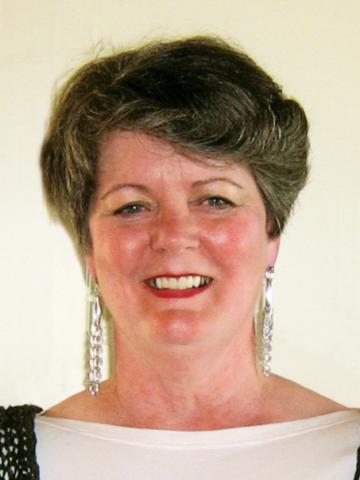Bio
Gunnhildur Hrólfsdóttir was born on November 1, 1947 in the Westman Islands. Soon after finishing her middle school education she started working at a child care center. She lost her home in the Vestman Island volcanic eruption in 1973 and moved to Reykjavík where she has lived since then.
Gunnhildur has for the most part written books for children and young people, both novels and plays. She received first prize for the story “Undir regnboganum” (Under the Rainbow) in a competition held by Ríkisútgáfa námsbóka in 1979; the Icelandic educational publishing company. The book was published a year later and has been used in Icelandic schools since. The romance, Vil, vil ekki (Want – Don’t Want) was published in 1986. Her story “Gulllykillinn” (The Golden Key) is one of the stories in the collection Ormagull (Worm Gold), a collection of short stories for children, based on Icelandic folklore. Gunnhildur received the Icelandic Children’s Literature Prize in 2001 for the book Sjáumst aftur… (See You Again…). She has written articles for the magazines Vera and 19. júní, both of which focus on feminist issues. Gunnhildur has also done radio programs about the Westman Islands, been active in the Writer’s Union and edited the paper Börn og bækur (Children and Books), published by IBBY in Iceland (International Board on Books for Young People).
From the Author
From Gunnhildur Hrólfsdóttir
I was born in the Westmann Islands and there I grew up in a large family. The economy was booming, the place was bustling and it was a great place for children. During the fishing season my relatives from the east fjords came to work and the house was always full of guests. My parents loved reading and besides their own fair collection of books we made good use of the town’s library. My father was a good story teller and he knew a lot of poetry and stories he quoted when he told his stories. My mother was a housewife. She was good with her hands, thrifty and clever. My life changed the instance she died, without warning, when I was 11 years old.
My parents were both from the east fjords and that was the setting for their hearts and minds. I spent many a summer there at my maternal grandparent’s farm. At that time many farms where still without electricity and the farming was done the way it had been done for centuries. The hay was cut by hand, there was a small boat and a boat landing and it would be rowed to fish with a line with a row of hooks. Most of the catch was cooked by my grandmother who was an excellent cook. Everyday food, both fish and meat, was also treated in traditional ways to preserve it, slightly fermented (fish), dried, pickled, salted and smoked. To go with this, we had potatoes and swedes from the kitchen garden. The food was cooked on the oil fuelled cooker and we ate by lamplight when the day grew darker in the autumn.
We, the children, worked alongside the adults, took turns to do the milking, to separate the milk from the cream and to churn butter and I learned how to make skyr [a kind of thick yoghurt]. We had our own miniature farms to play with in the meadow and we played with paper dolls made from paper from the co-op and my brothers made boats from cans of oil and named them after boats that were known to fish more than others.
In the autumn when I got back home I refrained from telling people that there was no electricity at the farm, I found it a bit embarrassing. Today I am proud to have taken part in a way of farming that has now disappeared and I feel that my roots lie from the Westmann Islands and east to the fjords. I lived on the islands until the volcanic eruption in 1973. I have never felt so powerless as when I watched the beginning of the eruption. “So, this is what it feels like to die”, is what I thought as the fire tore loose from the shuddering earth and the air was filled with sulphuric gasses. When the paralysing moment of terror passed, there came the hope of surviving this incredible nightmare and I joined the frightened villagers who hurried down to the harbour. My home, the place where I grew up disappeared under a blanket of ash and lava. Since then I have lived in the Reykjavík area.
I have always been keen on books and it was my son’s sudden illness that got me writing. I read a lot to him and then I started to write. In my writing I look back to youth and also the enormous changes that I have experienced. Life goes on and emotions will always be there and children will always have to face problems that they need to solve.
I have a constant need to get back to my place of origin. The Westmann Islands have a strong pull on me and I feel right at home at the east fjords. When I walk by the shore, take a trip out to sea and do a bit of fishing, I think of my people who have lived on that spot for centuries. I also think of the old people that had moved from the rural area but often came to stay with my grandfather and grandmother during the summers. Each and everyone had lived a long and hard life and full of curiosity I would listen to their tales of a time when the countryside was prosperous and there were people living on all the farms. I also wonder about why I am like I am and others are like they are. How much of us is the heritage of generations past and a vessel that conveys experience to our descendants? Sometimes my dreams predict the future. I had one such dream about the eruption. Things are not always what they seem. That is what I write about.
Gunnhildur Hrólfsdóttir, 2002.
Translated by Dagur Gunnarsson.
About the Author
Self-discovery and Time Travel: The Children’s and Teenage books of Gunnhildur Hrólfsdóttir
Gunnhildur Hrólfsdóttir is mainly known as an author of children’s and teenage literature. She received the Icelandic Children’s Literature Prize in 2001 for the book Sjáumst aftur (See You Again), but began her career with Undir regnboganum (Under the Rainbow) in 1980. Since then, she has sent forward a number of books at regular intervals, and has been popular with children and teenagers alike. Despite the fact that her first books were written 25 years ago, the have aged well and still speak to new readers, as there are not many fashionable terms, slang or other fashion phenomena in her stories. Gunnhildur’s teenage books are in most cases either about traditional teenage problems that most people are familiar with, love, friends, togetherness and growing up, or about supernatural events, mixed in with the daily lives of teenagers. Despite having mainly concentrated on writing for children and teens, Gunnhildur has written one novel for adults, the novel Vil, vil ekki (Want, Don’t Want) from 1986. The story centres around Elísa who is in her final year in high school, is engaged and whose parents are well off. Her future seems have all been laid out, but belatedly she realizes that she has no say in it herself. She rebels against her family and her monotonous life by going to the Faeroe Islands with her friend to work for the summer. Once there, she is able to find out who she really is and in the meantime she discovers real love, although there will be many obstacles before she and her great love get together.
Most of Gunnhildur’s teenage books with a realistic approach concern the relationships between children and their parents, and between children and their friends. Many of them describe how the main character in the book learns to respect herself and others, both parents and friends, but also how the parents learn to respect their children and their feelings. The stories address problems that relate to growing up, but also issues that have to do with life in general. The issues are divorce, violence, alcoholism, peer pressure, bullying and domestic problems, but although the problems are serious, there is always a possible solution, and the stories end on a positive note. Gunnhildur’s first book, Undir regnboganum is a well-written and gripping story about Dagga, who is 11 and lives in a small seaside village with her parents and brother. When her mother has a serious accident at work, Dagga must go south to the city to stay with her mother’s sister, as her father is a seaman and her paternal grandmother does not trust herself to take care of both siblings. Dagga has always been an outsider in her paternal family and the black sheep. Her stay with her aunt’s fun-loving and cheerful family has a positive effect on her and she realizes that her grandmother in the seaside village may not always have the best solution to everything despite her bossiness and overbearing behaviour, both towards Dagga and her mother. She sees that home life can be fun and tolerance is more important than having the perfect home.
Svarta nöglin (The Black Nail, 1995) is about siblings at a similar age as Dagga; following their parent’s divorce, they are living with their mother. Despite the children’s wishes that their parents get together again, their mother gets a new boyfriend who moves into their home. There is more to the boyfriend than meets the eye and he behaves particularly badly towards the children when their mother is not looking. The siblings, along with their friends, have formed a secret society that they call Svarta nöglin and they decide that it would be a job for the society to try to find out if the new boyfriend has skeletons in his cupboard. Svarta nöglin manages to find out a few things about the new man in their mum’s life and because of this discovery the relationship between the children and their mother becomes stronger and much closer than before.
Divorce and the emotional turmoil of children of divorce are common themes in Gunnhildur’s stories; Sara (Sara, 1991) is also about a girl who has parents who divorce. The book’s protagonist is Sara who is 13 years old and is having a hard time finding her footing after the divorce and subsequently gets in with the wrong crowd. She and her mother move to a new area and the kids she meets there are like her, confused and feel that no one is interested in them. After a difficult period where Sara is trying to find her place in life and figure out who she is, she eventually chooses the straight and narrow path, thereby improving her relationship with her whole family. Similar issues are dealt with in Það sem enginn sér (What No One Sees, 1998), but they are far more serious ones than in Sara. The book is about Benni, who moves into town with his mother, after his dad drowns at sea. He has no friends and misses his home but later meets Laufey, who is in a similar position to him. Benni is a rather quiet and peaceful boy and in fact the polar opposite of Laufey, who has a difficult environment at home, and lets out her inner pain through a quick temper and violence. Her step-dad is a violent drunk and subjects Laufey and her mother to both mental and physical violence. What they have in common is that they feel bad and are alone and have no friends, but with time Benni begins to find it hard to spend time with Laufey, as the demands she makes on him are great and not always within the law. When Benni starts making friends at school, and gets to go east to his old home over the Christmas break, they grow further apart, but what saves Laufey is when her mother’s sister comes for a visit and sees the situation in her home. Towards the end, Laufey and Benni both get the help they need to sort out their problems, and in spite of a difficult past, the future is bright.
The books Komdu að kyssa (Come, Let’s Kiss, 1993) and Spor í rétta átt (A Step in the Right Direction, 1987) are also both about girls who have a difficult home life and in both cases their difficult home life stems from a lack of communication between their parents. The protagonists of both books, like other of Gunnhildur’s characters, find it hard to find their footing on life and find it difficult to understand the demands that the grown-ups are making on them. They are also about friendship and love, and first love and the bittersweet emotions that come with it. The main character in Spor í rétta átt is considerably older than other protagonists in Gunnhildur’s books, in her late teens, and as a result there is a changed emphasis in the narrative of her and family conflict, love and peer pressure an seen from a different angle to most of the other books. Spor í rétta átt demonstrates how the heroine is partly responsible for her painful feelings and how she needs to solve her problems herself and not expect others to do it for her.
Þið hefðuð átt að trúa mér (You should have believed me, 1989) is the earlier of two books about Tommi, who moves into town from the east country. His parents are having trouble finding good jobs in the old place and see no other way than to move to the city. Tommi is not happy with this arrangement because he is lonely and has no friends in town. The kids in class bully him but his parents are too preoccupied with work and their own problems to notice how he is feeling. One day, when the kids are attacking him, a boy comes to his rescue, Árni who has also just moved to the neighbourhood. They immediately form a close friendship, and stick together against the bullies, who leave them in peace thereafter.
When they are together, Tommi and Árni always find interesting things to do, and when they start noticing some traffic of suspicious people around Lake Rauðavatn and later near Tommi’s apartment block, they start to investigate the case. They discover a thing or two about the men they have been watching, and get on the track of a serious crime by coincidence.
Þegar stórt er spurt (The Big Questions, 1990) is an independent sequel to Þið hefðuð átt að trúa mér and is also about the friends Tommi and Árni. In this book the friends go together out east, to stay at Tommi’s grandparents’ farm over the summer. Over there, Árni gets to know a world that is quite alien to him, as he is very much a city kid; but the two friends have fun, playing and working on the farm. They also get on the case of a conman who travels through the countryside, tricking old people, and by putting their heads together; the boys are able to expose him. Some of Gunnhildur’s teenage novels are considerably different from the rest and are about supernatural events mixed in with teenagers’ daily lives. The first one came out in 1992 and is titled Óttinn læðist (Sneaking Fear) and only makes slight references to ghosts and other unexplained occurrences. The book is in some way a historical account of life in the Westman Islands around the time when Gunnhildur was growing up there and descriptions from that time are quite removed from the modern reader. In Óttinn læðist the main character, Elín, notices many strange occurrences, she sees a threatening man standing by the family’s beds at night and has nightmares about volcanic eruptions. Although this part of the story takes in a way second place to the narrative of Elín’s daily life, these occurrences are a kind of a foreboding, because the book ends with the thing that Elín was most afraid of but no one believed would ever happen, the big eruption.
The next book with supernatural overtones is Hér á reiki (Hovering Around Here, 1996), and in this one, the supernatural events take up considerably more space than before. The book is about the 13 year old Mekkín or Metta, as she is called, who falls in with the wrong crowd at school. When she is discovered to have taken part in a crime committed by her friends, her parents decide to send her to the countryside during the summer. At first Metta is very unhappy with this and is very negative and to make matters worse, a ghost seems to haunt her on the farm, but no one else. The ghost does everything he can to drive her away but Metta is the only one who sees him and therefore has trouble getting others to believe her when she tells them about the haunting.
Metta’s great great grandmother lived on the farm where she is staying and it has been changed into a hotel for guests who want to learn about old farming methods. The place is popular and among the guests are a young girl and her grandmother, and the girl is the only person who sees what Metta sees. Together they discover that Metta must find a charm, a brooch, that the great great grandmother lost somewhere around the farm and not until then would there be an end to the haunting and the ghost’s disturbances. It seems that the ghost will succeed in having the upper hand when he causes an accident in which Metta is seriously wounded and is sent home, but at home she sees that her friends in town are not what they thought they were. In the countryside she has met people who really care about her, but she can see that her old friends are opportunists who don’t really care about her. She returns to the farm and the search for the charm begins anew, and it not only serves the purpose of ridding the farm of the haunting and inexplicable accidents, but also becomes a symbol for a new life in Metta and the happiness and contentment she has found in the country.
The next three of Gunnhildur’s books are all about Katla, who comes from a good home and has caring and loving parents, but possesses the gift, or the curse of being psychic. For her first book about Katla, Sjáumst aftur (See You Again), Gunnhildur was awarded the Icelandic Children’s Literature Prize; in the story, Katla moves with her parents to Westman Islands. The house that they move into is old and Katla starts having strange dreams there. She has visions and when she finds old clogs in a chest of drawers that came with the house, weird things start to happen. When she puts on the clogs, she is transported back to the era when their owner was alive and sees and experiences life in Westman Islands as it was back then. At the same time she notices, that a woman who she sees during her visions is trying to warn her about something, although at first she does not understand what it is. When some documents in her father’s workplace get stolen, Katla starts to put things in context and with her newfound friend, Júlía, and the woman in the visions she is able to solve the case. The book is at the same time a story about how a teenage girl adjusts to life in a new environment, gets to know some kids and the people in the town, and is also an interesting historical description of life in Westman Islands in the mid-nineteenth century.
In the next book, Allt annað líf (A New Life, 2002), Katla and her parents have moved away from Westman Islands. Her parents are going to Bosnia as aid workers and Katla is going to Stykkishólmur to baby-sit for her mother’s girlfriend for a couple of weeks. Once there, she meets a girl at the same age, Halla, and her grandmother, who are both quite special. Halla possesses a strange gift, not unlike the one Katla has herself. When Katla has told Halla about what happened last winter in Westman Islands, Halla and her grandmother coerce Katla to travel back in time and fetch a document that confirms their ownership of a land that their family lost near the end of the 15th century. To get there, Katla crawls into a chest that Halla and her grandmother close after her and when it opens again, she has travelled back in time. 15th century society is quite different from what Katla is used to and she has to learn many things that are new and strange to her before being able to recover the document.
In Gunnhildur’s latest book, Ránið (The Raid, 2004) Katla returns to Westman Islands to visit her friend Júlía, and among other things, the two girlfriends are planning go to the annual local festival (Icel. þjóðhátíð) along with Júlía’s family. Katla is pleased to go back to the Islands to meet her mates, but her stay turns out very differently from what she had expected. When the two girlfriends play “spirit board”, something peculiar happens and Katla wakes up in a completely different place and time. She has travelled back in time, to just before the Turkish Raid; [Transl. note: In 1627 Algerian Pirates, mistakenly thought to be Turks, raided the islands, enslaving many of the inhabitants and shipping them over to the slave market of Algiers]. Before she knows it, Katla has landed in the middle of the events. Like other inhabitants of the islands, she is herded onto a ship after witnessing bloody executions. Katla gets to know many people on the ship and tries to keep contact with them as best she can but there is a difficult time ahead for those Icelanders that have been kidnapped. Katla’s life with the family that buys her is described, as well as the other Icelanders in the area and their fates. After some time Katla manages to flee and a long journey through Europe in the Middle Ages awaits her.
The three stories about Katla are in some ways traditional teenage books about a girl who wants to have friends, has a crush on a boy and tries to fight peer pressure and be herself. Despite this, Katla’s psychic powers are in the foreground of the book, along with the historical events that are taking place in the times she visits. The descriptions of past eras are, as in all of Gunnhildur’s books where such descriptions occur, very well written and convincing and she manages to make Katla’s stay in the past believable. Katla also seems to find it easy to adapt and despite initial difficulties in a new place, they are usually over soon and it is interesting to see how the author tackles the conflict between the current era and the past through Katla. Gunnhildur’s stories about ghosts a d time travels are very different from her more realistic books, and she is able to keep up the suspense quite well throughout the story.
Many of Gunnhildur’s books are set in Westman Islands and descriptions of places and events are quite accurate and obviously based on a great deal of research, coupled with the author’s own experience. Gunnhildur seems to want to educate her readers, but she manages to do so in a way that is not overbearing, and although the reader learns from the story, it is never dry or overloaded with information.
In Gunnhildur’s realistic books the teenagers’ problems may seem great and insurmountable, but her positive tone and believable solutions have the effect of giving both readers and protagonists hope for a better life and a brighter future. The same goes for her stories with supernatural overtones, the supernatural has a maturing effect on the protagonists, and they view their lives in a fresh light after being introduced to a bygone era.
© María Bjarkadóttir, 2005.
Translated by Vera Júlíusdóttir.
Awards
2005 - IBBY Honor List: Ránið (The Raid)
2001 - The Icelandic Children’s Literature Prize: Sjáumst aftur ... (See You Again ...)
1997 - IBBY Iceland Award for her contribution to children’s culture
1979 - First prize in a competition hosted by Ríkisútgáfa námsbóka publishing house in the International Year of the Child: Undir regnboganum (Under the Rainbow)
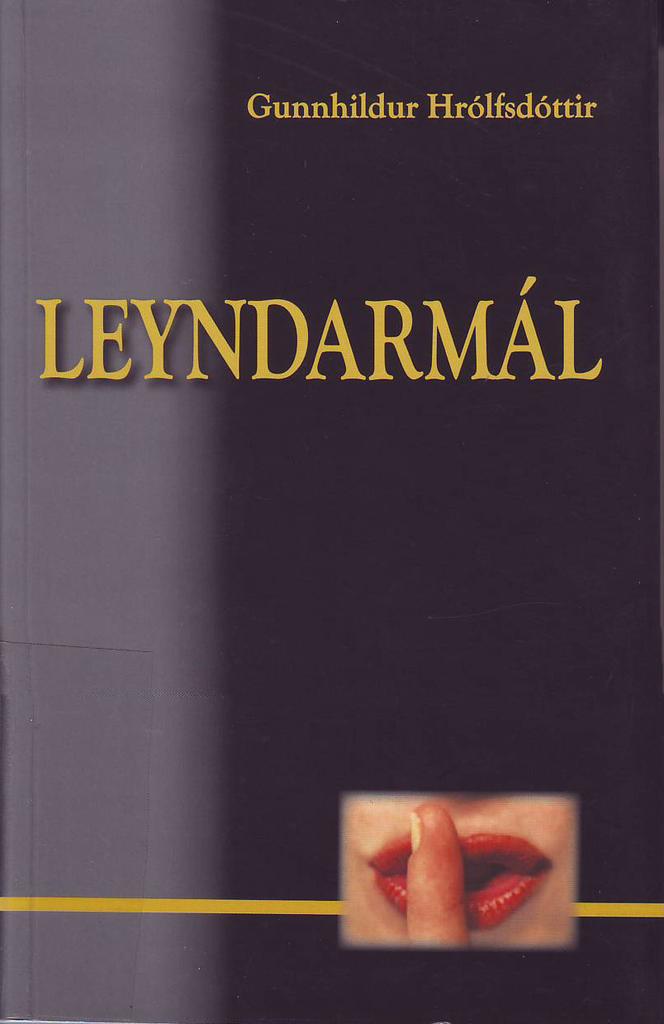
Leyndarmál (Secret)
Read more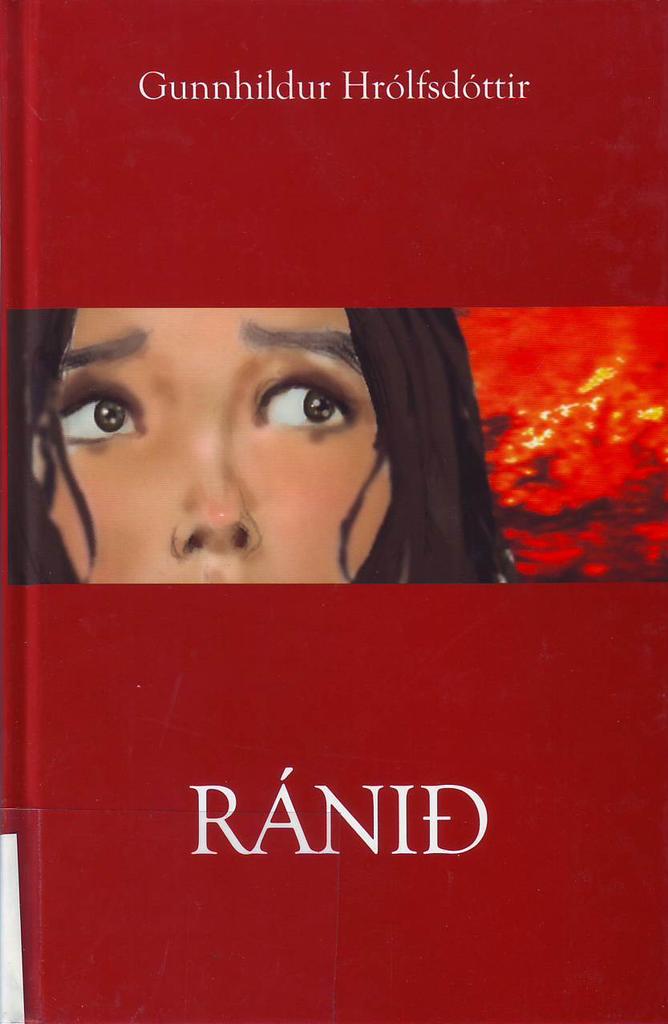
Ránið (The Raid)
Read moreNótt
Read more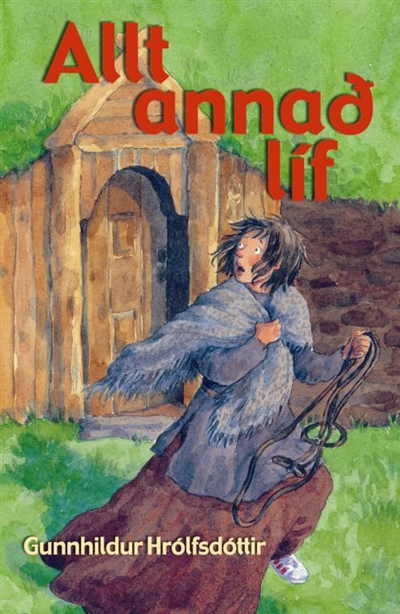
Allt annað líf (A Different Life)
Read more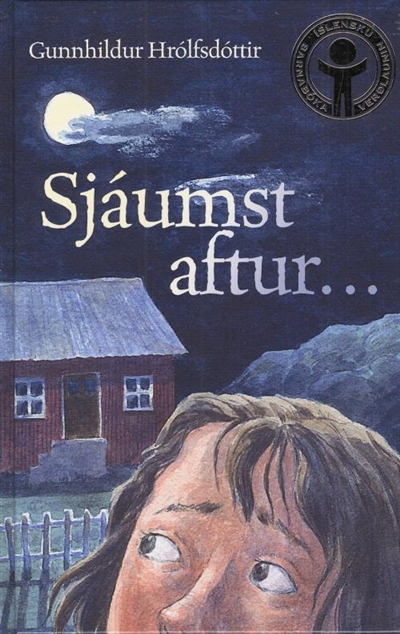
Sjáumst aftur ... (See You Again ...)
Read more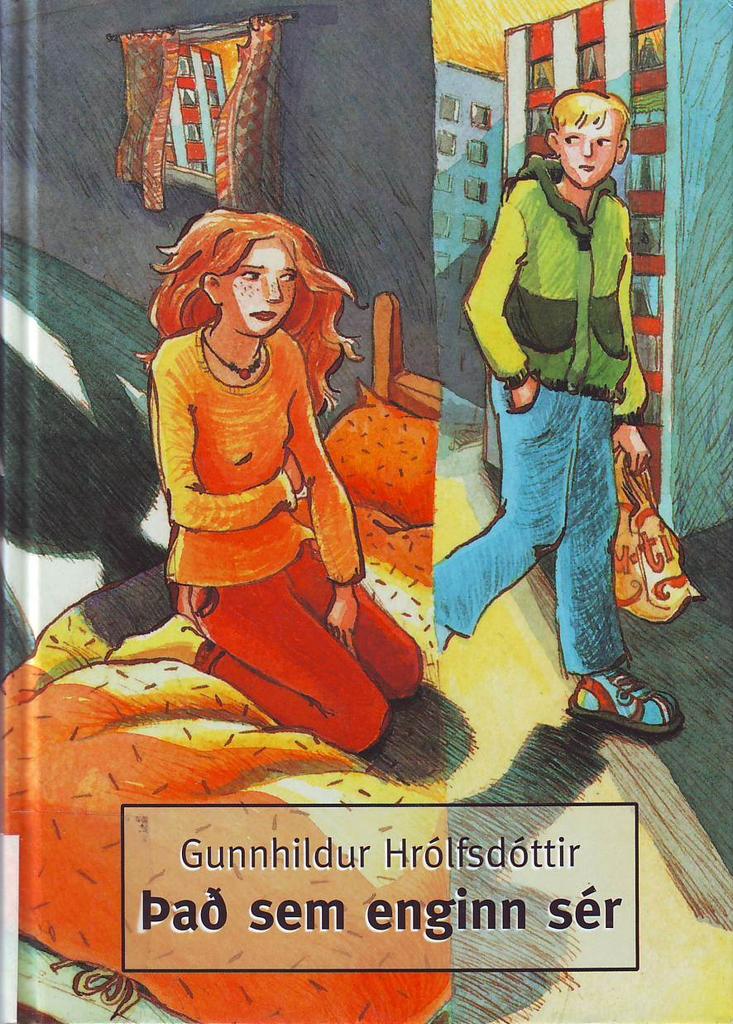
Það sem enginn sér (What Noone Sees)
Read moreRödd í síma (A Voice in a Telephone)
Read moreNú er kerlu minni skemmt
Read more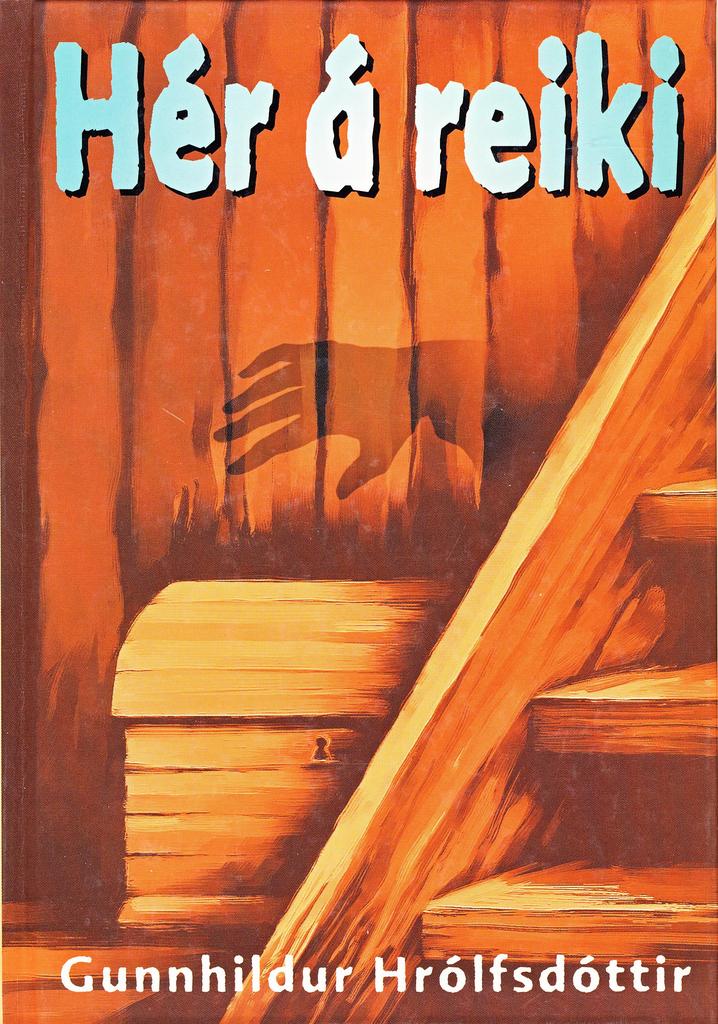
Hér á reiki (Something Spooky)
Read more
